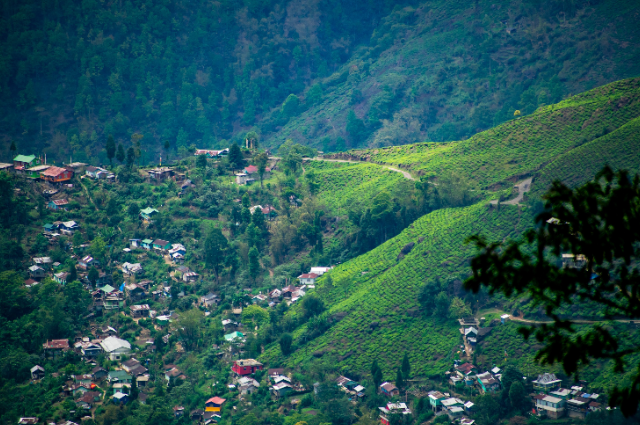
Photo by Boudhayan Bardhan on Unsplash
The World Congress on Disaster Management (WCDM) serves as a pivotal platform, uniting experts, policymakers, and communities to address the critical issues of climate action and disaster resilience. The upcoming congress places a special emphasis on the vulnerability and resilience of mountain ecosystems and communities, recognizing their unique challenges in the face of environmental threats.
The urgency of climate change demands a global response, and the WCDM stands at the forefront, providing a forum for collaboration and knowledge exchange. With the overarching theme of “Strengthening Climate Action & Disaster Resilience,” the congress aims to explore innovative strategies and holistic approaches to mitigate the impact of disasters and build robust communities.
Understanding the Context
Mountains, often referred to as the “water towers of the world,” play a crucial role in regulating climate patterns and supporting diverse ecosystems. However, they are disproportionately affected by climate change, facing risks such as glacial melting, landslides, and extreme weather events. The congress recognizes the interconnectedness of environmental challenges and aims to tailor solutions that address the specific needs of mountain regions.
Key Objectives
- Knowledge Exchange: Facilitating the exchange of scientific research, best practices, and local wisdom is a cornerstone of the Congress. Participants will delve into the latest advancements in disaster management, climate science, and community resilience, fostering a collaborative approach to tackling challenges.
- Policy Development: WCDM serves as a platform for policymakers to discuss and formulate effective policies that integrate climate action and disaster resilience. The focus on mountain ecosystems ensures that policies are contextually relevant and considerate of the unique vulnerabilities faced by these regions.
- Community Empowerment: Recognizing the role of communities as the first line of defense against disasters, the congress aims to empower local populations. Through workshops and interactive sessions, community leaders will share their experiences and learn from each other, contributing to the creation of sustainable and community-driven solutions.
- Technology and Innovation: Embracing technological advancements is essential in enhancing disaster preparedness and response. The congress will showcase cutting-edge technologies and innovative solutions that can be deployed in mountainous terrain, where traditional methods may fall short.
Special Focus on Mountain Ecosystems & Communities
- Climate Adaptation Strategies: Delving into the intricacies of mountain ecosystems, the congress will explore adaptive strategies that help communities cope with changing climate patterns. This includes sustainable land management, water conservation, and biodiversity protection.
- Risk Reduction Measures: Identifying and mitigating risks unique to mountainous regions is imperative. Sessions will highlight effective measures such as early warning systems, infrastructure resilience, and community-based risk reduction initiatives.
- Cultural Heritage Preservation: Recognizing the symbiotic relationship between mountain communities and their cultural heritage, the congress will emphasize the importance of preserving local traditions and knowledge. This not only fosters community identity but also contributes to sustainable development.
International Collaboration
International collaboration is paramount in addressing the transboundary nature of climate change and disasters. The WCDM provides a platform for nations to share experiences and collaborate on regional and global initiatives. By fostering partnerships, the Congress seeks to create a united front against the shared challenges faced by mountainous regions worldwide.
Case Studies and Success Stories
The congress will feature in-depth case studies and success stories from mountain communities that have successfully implemented resilience-building strategies. These real-world examples serve as valuable lessons for other regions facing similar challenges, promoting a practical and solutions-oriented approach to disaster management.
Education and Capacity Building
An integral aspect of the WCDM is its commitment to education and capacity building. Workshops and training sessions will equip participants with the knowledge and skills needed to implement effective disaster management and climate resilience strategies. This emphasis on capacity building extends to both professionals and community members, ensuring a comprehensive and inclusive approach.
Ethical Considerations
As discussions unfold, ethical considerations related to disaster management and climate action will be addressed. This includes ensuring that interventions are equitable, environmentally sustainable, and culturally sensitive. The congress will encourage dialogue on ethical frameworks that guide decision-making in the face of complex challenges.
Youth Involvement
Recognizing the impact of climate change on future generations, the WCDM actively involves youth in its proceedings. By engaging young minds in discussions and workshops, the congress aims to inspire a new wave of leaders committed to sustainable practices and innovative solutions. Youth involvement is crucial for the long-term success of climate and disaster resilience initiatives.
The Role of Indigenous Knowledge
Indigenous communities, often deeply connected to mountain ecosystems, possess invaluable traditional knowledge. The congress will highlight the significance of integrating indigenous perspectives into mainstream disaster management strategies. By respecting and leveraging indigenous wisdom, we can create more holistic and culturally resonant approaches to building resilience.
Call to Action
As the WCDM unfolds, it issues a compelling call to action. Governments, organizations, communities, and individuals must commit to concrete steps that prioritize climate action and disaster resilience. The congress serves as a catalyst for change, urging stakeholders to implement policies, allocate resources, and collaborate across borders to secure a sustainable and resilient future for mountain ecosystems and communities.
Conclusion
The World Congress on Disaster Management serves as a beacon of hope in the face of escalating climate challenges. By focusing on the intricacies of mountain ecosystems and communities, the congress aims to forge a path toward a more resilient and sustainable future. As global citizens, we must unite, learn from each other, and collectively work towards a world where disasters are met with preparedness, and communities thrive in the face of adversity.
